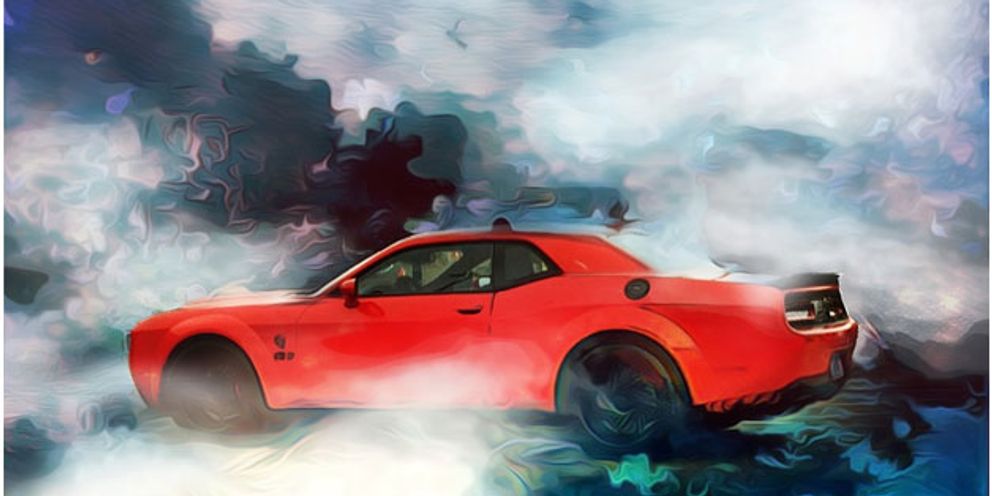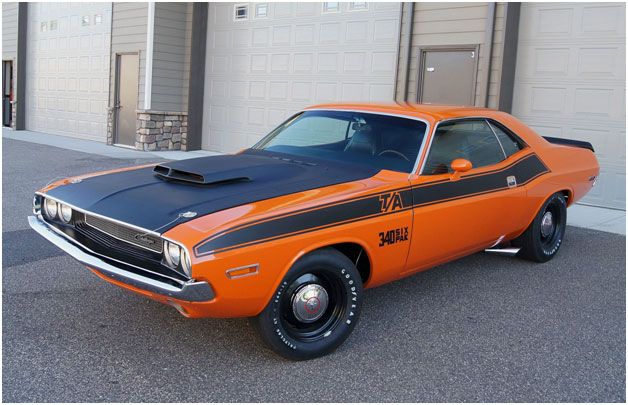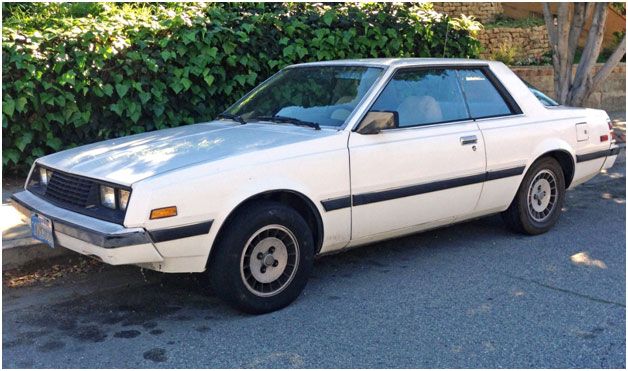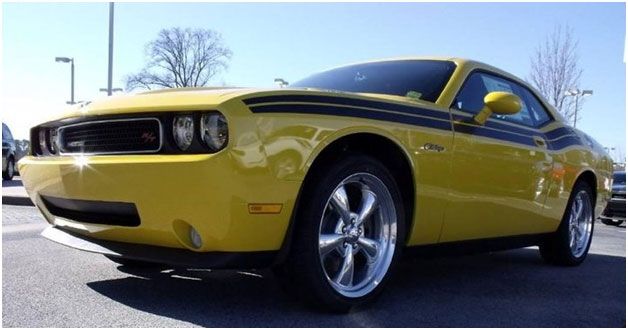
History of the Dodge Challenger
Image Credit: Prettysleepy2 / Pixabay
Writer John Linden
Muscle cars have that something which makes them stand out on the road. Dodge Challenger is certainly one of them. This line of cars is still very popular even though the first model was introduced decades ago. Dodge recognized that sticking to the original design and improving it with every new model is the way to go. But how did it all start? Let’s dive into the history of Dodge Challenger!
The birth of Challenger
The name Challenger was first given to the Dodge Coronet released in 1959. The car was a special edition called Dodge Silver Challenger, and it didn’t exactly look like a typical muscle car. As a matter of fact, the era of muscle cars was just around the corner. Ford and Chrysler were coming up with the ideas that would change the automotive world in just a couple of years. Check out car covers for your Chrysler 300c.
Ford is often credited as the company who made the Americans fall in love with muscle cars. They were pioneers, eager to combine excellent performance with a very strong engine. Ford’s competitors had to release something which could rival their Mercury line. The demand for longer and more powerful cars was growing each day. This prompted Dodge to start developing the first Challenger.
Image: By Greg Gjerdingen from Willmar, USA - Dodge Challenger, CC BY 2.0

The first generation (1970–1974)
The Challenger was first introduced in the fall of 1969. Dodge intended to release it in 1970. The initial idea was for Challenger to have a turbine engine, but the designers decided to leave it out. However, they liked the sketches, so Dodge took it as an inspiration for their final product. The first generation of Challenger was created by using the Chrysler E platform. The buyers were initially able to choose between a two-door hardtop coupe or a convertible. There were two options for engines as well - an Inline-6 or V8 engine. The selection of engines was remarkable for that time. They ranged from a 225-cubic-inch I-6 with 145 horsepower to a 440-cubic-inch V-8 with 390 horsepower.
The Challenger SE was released the same year, and it had luxury features such as cruise control, a cassette player, super comfortable interior, etc. There was also Dodge Challenger T/A or Trans Am which was basically a racing car suitable for everyday use, as well as for a drag strip. Challenger T/A was groundbreaking and one of the first muscle cars that had differently sized tires on the front and the back.
The Challenger Coupe was introduced in 1971, and it came with several improvements when compared to the first series. For instance, the front grille featured a different design. The engine didn’t see an enormous upgrade even though Dodge still provided you with a wide selection. The Coupe had Inline-6 or a V8 as options. Buyers could still choose a more powerful engine if they wanted to. The size went to 440 cubic inches.
1972 was a disappointing year for all Dodge Challenger fans because the model which was unveiled that year barely featured any notable changes. The silhouette of the car was redone, and the taillights got longer. Additionally, this was the first Dodge Challenger that had the “egg-crate” grille. On the other hand, buyers weren’t able to choose luxury details such as power windows, leather seats, etc. The engines were also downgraded. They now ran on unleaded gas. Inline-six and V8 engines were still in play, but they were significantly less powerful. For instance, the strongest engine you could get in a 1972 Dodge Challenger was a 340-cubic-inch V8.
It looked like Dodge wasn’t interested in maintaining the Challenger line because they continued to downgrade it in both 1973 and 1974. However, there were some new additions to 1974 Challenger regarding the safety of the drivers and passengers. This was brought up by the increase of car insurance rates. The 1974 Challenger had seatbelt-ignition interlock meaning that a driver couldn’t get the car to start unless everyone was buckled up.
The models featured even less powerful engines, and a buyer had to select a V8 one. You couldn’t get a new Challenger with a six-cylinder engine anymore. The best engine you could get in 1974 was a 360-cubic-inch V8 with 345 horsepower. This was the year when Dodge Challenger was officially discontinued. Around 188,600 Dodge Challengers were sold in those five years.
Even though the first generation of this iconic car had a relatively short run, it impacted the auto industry as well as the pop culture. It became a phenomenon among the people who love muscle cars and was featured in numerous movies and TV shows. As a matter of fact, a movie called Vanishing Point popularized 1970 Dodge Challenger and made generations of car enthusiasts fall in love with this vehicle.

The second generation (1978–1983)
1978 saw the return of the Challenger. Or at least the name itself was back. The second generation was less impressive than the predecessors and was introduced as Mitsubishi Galant Lambda. The models produced from 1978 to 1980 had a very similar design to the previous Galant Lambdas, but they were more sporty with racing stripes on their sides. A major redesign happened in 1981 when Mitsibushi changed the look of the headlights and added some details as well.
The second generation of the Challenger had less powerful engines. They were equipped with Inline-4,which made them completely different from the previous models. But these engines had a larger volume than the standard Inline-4, and they were revolutionary at that particular moment in time. The Challenger, which was released in 1978 featured I-4 engine with a 97-cubic-inch volume, and 77-horsepower.Mitsubishi made it happen with the use of balance shafts, which could lower the vibration of the engine.
This generation of Challengers was the first one to feature this technology in the United States. The revival of the Challenger line still got great reviews. The second generation was fairly popular and sold from 12,000 to 15,000 units every year. They were available up until 1983 when Dodge decided to focus on other models, most notably Conquest and Daytona.
By Hunttriumph1500 - Own work, CC BY-SA 4.0

The modern Challenger (2008 – now)
The start of the new millennium saw the revival of several classic muscle cars. The public was ecstatic when they learned that Ford is working on the release of the new Mustang back in 2002. Chevrolet and Dodge followed closely behind. These companies announced in 2006 that they are working on new versions of Camaro and Challenger. However, Dodge started releasing teasers and sketches in 2005, so the fans knew that the new version would be exactly what they wanted. The excitement among all car lovers was growing because this meant they will get to see the redesigned classics fit for the modern era.
The new Challenger became available in 2008. It was clearly inspired by the original version from 1970, but there were some visible improvements. The design itself stayed true to the first Challenger with several additions. Dodge Challenger SRT8 was truly a dream come true to all the fans: the performance of the car was impeccable, and it paid homage to the models which came before. The front suspension is inspired by Mercedes-Benz S-Class, while the rear suspension uses the technology seen in Mercedes-Benz E-Class. The luxury features you can get with the standard model include air conditioning, cruise control, and 17-inch aluminum wheels.
The Challenger SRT8 is super powerful with a large engine and bigger brakes. This vehicle is both luxurious and performs smoothly on and off the track. The third generation has several models which are generally praised by the drivers. One of them is the Challenger R/T which features a slightly smaller engine than SRT8. The 345-cubic-inch Hemi engine is more than enough for regular use. A driver can choose between automatic and manual transmission which is very convenient.
Another model from the third generation worth highlighting is the Challenger Hellcat. This vehicle took the automotive world by fire. The overall design is so distinctive but still very reminiscent of the rest of the Challenger line. It is a real beast with its 378-cubic-inch Hemi engine and 707 horsepower. The Challenger Hellcat is appropriate for daily use but considering all the custom features, it might be more suitable on a drag strip.
The rest of the third generation Challengers include SXT, SE, R/T Scat Pack, as well as the newest addition introduced in 2018, which is called Demon. Dodge really did revive the Challenger in the best possible way, adding so many modern upgrades which guarantee that Challenger will remain a true classic. Considering the interest in the new Challenger line, it is clear they are here to stay.
Updated